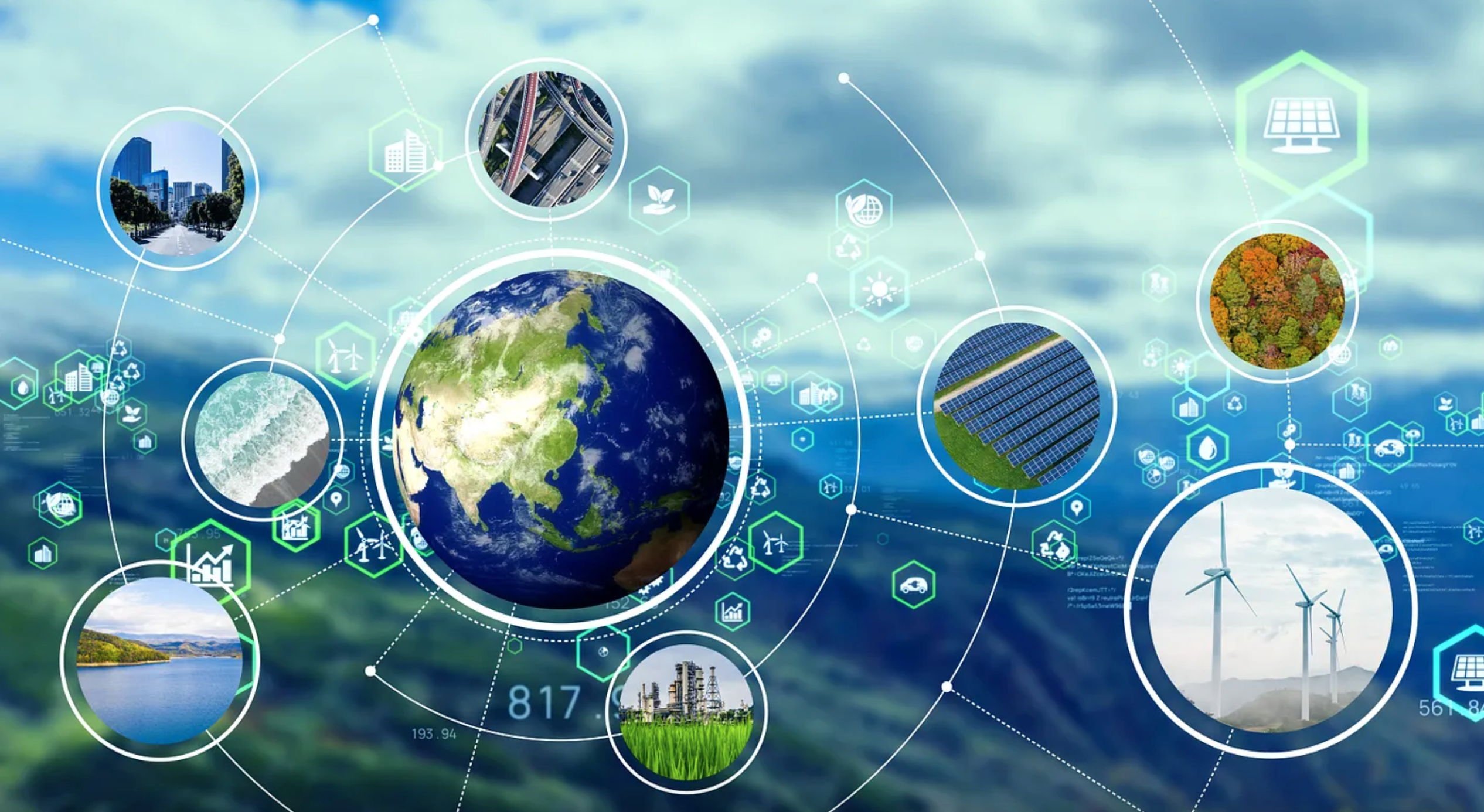Insight
Deep Tech: Large-Scale Answers to Real-World Challenges
5 October 2022 | AIP Investment

Every day, our world offers stark reminders of its ever-evolving challenges: headlines spotlighting global injustices, protesters demanding better wages and benefits, billboards emblazoned with half-melted ice shelves. And with every global crisis, these urgencies only grow clearer: the pandemic, for example, has exposed healthcare inequalities, government inefficiencies, and the devastating effects of misinformation.
Amidst the chaos, there’s still cause for optimism. How can we begin to tackle these life-threatening challenges? The United Nations (UN)’s Sustainable Development Goals (SDGs), a collection of 17 interrelated objectives, serve as a “blueprint to achieve a better and more sustainable future for all.” From world hunger to marine conservation, these goals delineate the intricacies of the world’s crises — as well as the actions necessary to address them.
Promising ideas emerge every day, imbuing the world with much-needed hope. In particular, deep tech — which harnesses advances in science and engineering to tackle global challenges — is perhaps our greatest beacon of light. By introducing and advancing transformative technology, deep tech breakthroughs aim to eradicate hunger, improve life expectancy, and slow global warming, among other sweeping objectives. Today’s circumstances have led to dire consequences — but thanks to deep tech innovation, the best solutions are within reach. Here are three areas that are already being transformed by deep tech’s profound global impact.
Healthcare: Saving Lives Through Innovation
A single breakthrough can transform millions of lives. This is especially true in healthcare and disease treatment, whose challenges are often time-sensitive and access-oriented.
Consider the COVID-19 crisis, for example. This deadly disease has swept the globe forcefully and unforgivingly, resulting in an untold number of hospitalizations and deaths. Drawing on decades of cutting-edge research, German biotechnology giant BioNTech developed an mRNA vaccine in record time, significantly reducing the risk of hospitalization and death.
According to the UN, the pandemic has exposed and exacerbated healthcare predicaments in nearly every country, across countless sub-sectors: 90% of countries are still experiencing at least one disruption to essential health services, clinics and hospitals remain short-staffed, and citizens all over the world lack access to data detailing the true impact of COVID-19. What’s more, with regard to reproductive and child health, an entire decade of progress could be stalled or reversed.
SDG 3 (Good Health and Well-Being) aims to “ensure healthy lives and promote well-being for all at all ages.” The mRNA vaccine has already begun to accomplish that: for those who receive two or more doses, the risk of COVID-19-related hospitalization or death falls by at least 90%. By contrast, among unvaccinated individuals, the probability of hospitalization or death is at least five times higher. Today, hundreds of millions of mRNA vaccine doses have already been administered — a testament to the unimaginably profound impact of deep tech innovation.
Deep tech solutions have also begun to address other pressing medical conditions. Coronary artery disease — less novel than COVID-19, but equally devastating in nature — is one of the leading causes of death worldwide, affecting nearly half the adult population. HeartFlow, an American medical technology company revolutionizing “precision heart care,” harnesses artificial intelligence to develop diagnostic tools for heart diseases. Its core offering, drawn from a simple CT scan, is a personalized, non-invasive diagnostic test — an interactive 3D model that accurately measures blood flow, all based on a secure software-as-a-service platform that yields results in less than 5 hours. It’s a revolutionary alternative to standard cardiovascular diagnostic testing, which often involves invasive, radiation-heavy procedures.
Like BioNTech’s mRNA vaccine, HeartFlow’s AI-driven diagnostic assessment supports SDG 3 (Good Health and Well-Being). By minimizing the risks of cardiovascular testing, HeartFlow streamlines diagnosis, ensuring a growing number of patients remain as healthy as possible throughout the process — and encouraging more patients to pursue testing in the first place. With advanced analytics, HeartFlow also allows physicians to create more effective treatment plans.
This state-of-the-art solution can transform other realms, too. SDG 10 (Reduced Inequalities), for example, seeks to “reduce inequality within and among countries.” Although its technology is only commercially available currently in the United States, Canada, Europe, and Japan, HeartFlow is working to accelerate adoption worldwide. Moreover, the very nature of HeartFlow’s technology fuels accessibility: in countries around the world, imaging facilities are relatively more prevalent and affordable than invasive catheterization centers.
As both developing and industrialized countries adopt HeartFlow’s tools, healthcare infrastructure will grow increasingly resilient, providing more patients with high-quality care. That aligns with SDG 9 (Industries, Innovation, and Infrastructure), which strives to “build resilient infrastructure, promote inclusive and sustainable industrialization, and foster innovation.” For both individual patients and entire healthcare systems, the effects of deep tech are life-saving.
Information & Communications Technology: Overhauling Today’s Infrastructure
Today, businesses and governments want to accomplish more meaningful tasks — with minimal financial and time-related costs. The information & communications technology (ICT) sector, which harnesses modern computing to streamline communications, aims to make that possible.
Horizon Robotics is a Chinese unicorn that develops AI chips for autonomous vehicles, advanced driver assistance systems (ADAS), and delivery robots. As the only mass-producer of automotive-grade, pre-installed AI chips in China, Horizon has distinguished itself as a global leader in the automotive industry.
The autonomous vehicle industry is on the rise. With powerful AI-driven processors and algorithms, Horizon offers a cost- and energy-efficient approach to developing and implementing compliant self-driving cars. Its multi-sensor support system, equipped with advanced vision and detection capabilities, is able to pinpoint more than 300 types of traffic lights and signs.
These advancements are already transforming the field. Late last year, Horizon partnered with RoboSense, a Chinese Light Detection and Ranging (LiDAR) developer, to create advanced perception systems — a critical component of self-driving vehicles. Large-scale commercialization is, as the company’s name suggests, on the horizon.
Building more intelligent and connected transportation systems can transform lives. SDG 11 (Sustainable Cities and Communities) aims to “make cities and human settlements inclusive, safe, resilient, and sustainable” — which starts with safer, more efficient ADAS systems. As automotive technology improves, deep tech innovators like Horizon will continue working toward full-fledged autonomous vehicle networks — once considered a mere pipe dream. Inclusive and reliable transportation is also fundamental to resilient societal infrastructure, a key element of SDG 9 (Industries, Innovation, and Infrastructure).
ICT can revolutionize office environments, too. Kryon Systems, a software company specializing in robotic process automation (RPA), leverages AI to drive productivity and morale, manage risks, and lower costs. While other RPA companies often rely on time-consuming evaluation processes to identify known and unknown manual workflows, Kryon implements a one-of-a-kind Process Discovery method. This proprietary strategy — driven by a robot that maps out and evaluates existing processes, and then generates new ones in their place — makes the RPA adoption process far more efficient and affordable. It also dramatically increases the likelihood of long-term RPA usage and expansion.
RPA, when executed properly, can deliver extraordinary results. Consider SDG 8 (Decent Work and Economic Growth), for instance: ”to promote inclusive and sustainable economic growth, full and productive employment, and decent work for all.” In light of last year’s unprecedented employee attrition rates and general labor shortages, small and medium-sized businesses are prioritizing outside-the-box strategies to remain viable. With digital workers, these businesses can accomplish more with less — and meet high-stakes compliance requirements, now that they’ve eliminated human error. Moreover, when tedious back-office tasks are handed off to digital workers, actual employees can pursue more enjoyable and fulfilling work — a win for morale and retention. These benefits also call to mind SDG 10 (Reduced Inequalities): armed with operational efficiencies and happier employees, small businesses can begin to compete with large corporations, bridging the gap between smaller and bigger players in both emerging and industrialized markets.
Industrial Tech: Revolutionizing Manufacturing
Traditional mass production — rife with operational inefficiencies and hazardous machinery — is growing increasingly obsolete. Thanks to deep tech innovation, the next industrial revolution is taking root.
Carbon, a venture-backed 3D printing technology company, is at the forefront of that revolution. The company’s proprietary Digital Light Synthesis (DLS) printing process harnesses digital light projection and oxygen-permeable optics to generate high-quality end-use parts. While traditional resin-based 3D printing tends to produce weak and breakable parts, DLS uses heat activation to produce remarkably strong parts with engineering-grade properties.
This unique breakthrough is disrupting traditional design and manufacturing processes. Engineers can speed up testing, iterating, and prototyping — and imagine entirely new possibilities, such as “consolidated parts, un-moldable geometries, and software-tunable lattices.” DLS also seamlessly integrates design and manufacturing: products in production can be easily revised, simplifying the scaling process.
Carbon’s groundbreaking technology offers a wealth of other benefits. Its state-of-the-art printing process is surprisingly cost-effective, thanks to partnerships with large chemical suppliers, a global production network, and bulk packaging. By prioritizing accessibility, Carbon is democratizing manufacturing — and, in line with SDGs 8 (Decent Work and Economic Growth) and 10 (Reduced Inequalities), bridging the gap between emerging markets and the world’s biggest economies. Lastly, by accelerating the entire product development process — from conception to scaling — the company fosters innovation, a core component of SDG 9 (Industries, Innovation, and Infrastructure).
Manufacturing can be optimized in endless ways, both in terms of productivity and worker safety. Covariant, an AI-driven robotics company, creates industrial robots that perform tedious, repetitive, and dangerous production tasks. While other companies’ robots must be assigned pre-programmed tasks in controlled environments, Covariant’s are equipped with “reason” and “action,’’ made possible by the AI-driven Covariant Brain.
These robots offer a more intuitive approach to highly technical manufacturing processes, including order picking, singulation and placement, and sorting. Because they can adapt to new, potentially demanding environments, Covariant’s robots are a breakthrough in efficiency, accuracy, and durability.
By adapting to unique and ever-changing conditions — beyond what traditional robots are capable of — Covariant’s technology is transforming manufacturing in new ways. The deep tech approach results in greater innovation and more sustainable industrialization, as championed by SDG 9 (Industries, Innovation, and Infrastructure). Covariant’s robots also promote productive and dignified work, as delineated by SDG 8 (Decent Work and Economic Growth). As with Kryon’s RPA technology, these robots free human workers from mundane manual tasks — and, more importantly, jobs that put lives in danger.
Deep Tech: Tackling the UN’s SDGs, One Discovery at a Time
Our global crises are growing increasingly critical by the minute. As deep tech innovators nurture new ideas, entire industries will undergo revolutions of their own — as will the societies that benefit from them. New technologies will emerge from dynamic combinations of scientific and engineering disciplines — and, with them, potential solutions to the world’s most pressing problems.
As evidenced by the UN’s SDGs, the challenges that surround us are often interconnected. That’s why deep tech innovation is more urgent than ever: these multi-disciplinary advancements reverberate throughout entire communities, shaping every area of our lives — often simultaneously. As humans, we instinctively desire a safer, healthier, and cleaner future — for both ourselves and our children. Deep tech, with all of its breathtaking potential, is exactly what the world needs.
Tags:




